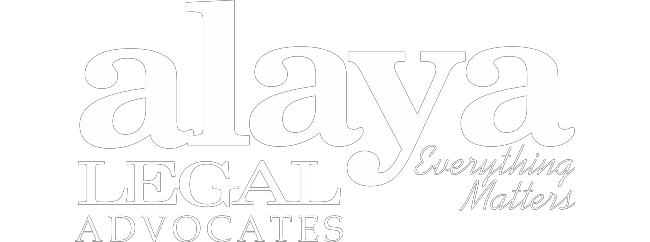JUSTICE IS INCIDENTAL TO LAW AND ORDER.
J. EDGAR HOOVER, DIRECTOR, FBI
EMPLOYMENT
- Rajneesh Khajuria v. Wockhardt Ltd
(IN THE SUPREME COURT OF INDIA CIVIL APPELLATE JURISDICTION CIVIL APPEAL NO. 8989 OF 2019)
The Supreme Court in this case examined the jurisdiction of the Labour Court. Further, amongst other things, the concept of ‘malice in law’ was examined. malice in law. It was observed, ‘…As mentioned in the judgments referred to above, malice in law would be something which is done without lawful excuse or an act done wrongfully and willfully without reasonable or probable cause. There is power of transfer in the letter of appointment. The appellant has stayed at Sagar for almost 20 years. If an employee is transferred after 20 years and that to the place of headquarters of a company, it cannot be said that the act of transfer was done without lawful excuse. No inference can be drawn that an act was done from ill feeling or spite.’
https://main.sci.gov.in/supremecourt/2015/2033/2033_2015_11_1502_19663_Judgement_15-Jan-2020.pdf - Pawan Hans Limited & Ors v. Aviation Karmachari Sanghatana & Ors
(IN THE SUPREME COURT OF INDIA CIVIL APPELLATE JURISDICTION Civil Appeal No. 353 of 2020)
The issue which arises for consideration is whether the contractual employees of the Appellant ¬Company are entitled to provident fund benefits under the Pawan Hans Employees Provident Fund Trust Regulations or under the Employees’ Provident Funds and Miscellaneous Provisions Act, 1952 (“EPF Act”) and the Employees’ Provident Fund Scheme, 1952 (“EPF Scheme”) framed thereunder. It was held that; (i) the Company has failed to make out a case of exclusion from the applicability of the provisions of the EPF Act. (ii) Clause 1.3 of the Regulations shows that the PF Trust Regulations were made applicable to “all employees” of the Appellant-Company. Clause 2.5 of the Regulations, defines an “employee”, to include any employee who is employed for wages/salary in any kind of work, monthly or otherwise, or in connection with the work of the Company, and who gets his wages/salary directly or indirectly from the Company. Clause 2.5 of the PF Trust Regulations would undoubtedly cover all contractual employees who have been engaged by the Company, and draw their wages/salary directly or indirectly from the Company. As per Section 2(f) of the EPF Act, the definition of an ‘employee’ is an inclusive definition, and is widely worded to include “any person” engaged either directly or indirectly in connection with the work of an establishment, and is paid wages. It was held that that the members of the Respondent ¬Union and all other similarly situated contractual employees, are entitled to the benefit of provident fund under the PF Trust Regulations or the EPF Act.
https://main.sci.gov.in/supremecourt/2018/45976/45976_2018_16_1501_19627_Judgement_17-Jan-2020.pdf
CONTRACTS
- Mohammed Siddique & Anr v. National Insurance Company Ltd & Ors
(IN THE SUPREME COURT OF INDIA CIVIL APPELLATE JURISDICTION CIVIL APPEAL No.79 OF 2020)
The Supreme Court opined on the invocation of the principle of contributory negligence, in a case involving a motor accident leading to death. The fact that a person was a pillion rider on a motor cycle along with the driver and one more person on the pillion, may be a violation of the law. But such violation by itself, without anything more, cannot lead to a finding of contributory negligence, unless it is established that his very act of riding along with two others, contributed either to the accident or to the impact of the accident upon the victim. There must either be a causal connection between the violation and the accident or a causal connection between the violation and the impact of the accident upon the victim. It may so happen at times, that the accident could have been averted or the injuries sustained could have been of a lesser degree, if there had been no violation of the law by the victim. What could otherwise have resulted in a simple injury, might have resulted in a grievous injury or even death due to the violation of the law by the victim. It is in such cases, where, but for the violation of the law, either the accident could have been averted or the impact could have been minimized, that the principle of contributory negligence could be invoked.
https://main.sci.gov.in/supremecourt/2017/33716/33716_2017_2_31_19319_Judgement_08-Jan-2020.pdf
ENVIRONMENT
- M C Mehta v. Union of India and Ors
(IN THE SUPREME COURT OF INDIA CIVIL ORIGINAL JURISDICTION IA NOS.158128 AND 158129 OF 2019 IN WRIT PETITION (C) NO.13029 OF 1985)
The Supreme Court issued and re-iterated directions, in respect of combating air pollution in Delhi and NCR Region and amongst other things has required that ‘The decision taken by the High Level Committee constituted by this Court be placed on record along with comprehensive action plan and the action taken thereon so.
https://main.sci.gov.in/supremecourt/1985/63998/63998_1985_3_1501_19445_Judgement_13-Jan-2020.pdf - Hanuman Laxman Aroskar v. Union of India
(IN THE SUPREME COURT OF INDIA CIVIL APPELLATE JURISDICTION M.A. No. 965 of 2019 IN Civil Appeal No. 12251 of 2018)
The essence of the controversy in the present case is whether the concerns which were highlighted in the earlier judgment of the Court dated 29 March 2019, have been adequately addressed and remedied. In this case, the Court highlighted numerous concerns including the preservation of forests, the existence of Ecologically Sensitive Areas (ESAs) with their attendant features and the impact of the proposed project on natural water channels. The Court also noted the abject failure of the project proponent to provide complete information on the existence of reserved forests. In the proceedings that followed the judgment of this Court, the project proponent sought to remedy its failure by taking into account additional information on significant aspects of the environment. In the process leading to the grant of the Environmental Clearance (EC) as well as the lifting of its suspension by this Court, numerous mitigatory conditions have been imposed on the project proponent. The Court deemed it appropriate to ensure the oversight of the project by a specialized body to ensure compliance with the directions cumulatively issued by this Court, and directed the National Environmental Engineering Research Institute to be appointed to oversee compliance with the directions cumulatively issued by this Court.
https://main.sci.gov.in/supremecourt/2019/17588/17588_2019_8_1501_19510_Judgement_16-Jan-2020.pdf
PROPERTY
- Fair Communication and Consultants & Anr v. Surendra Kerdile
(IN THE SUPREME COURT OF INDIA CIVIL APPELLATE JURISDICTION CIVIL APPEAL NO. 106 OF 2010)
The Court reiterated that the onus of establishing that a transaction is benami is upon one who asserts it.
https://main.sci.gov.in/supremecourt/2009/2990/2990_2009_4_1501_19689_Judgement_20-Jan-2020.pdf

























